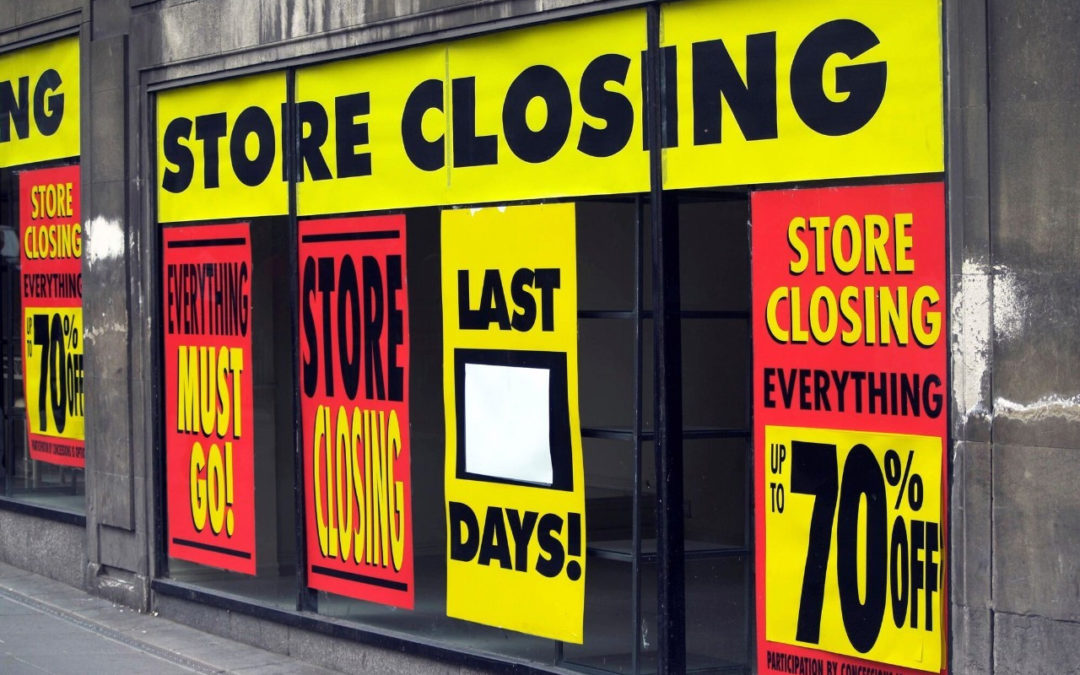
Kevin May
Director, GRS Group
(310) 614-9329
kmay@fv2.d32.myftpupload.com
It’s no secret that the retail industry is having issues right now that impact commercial real estate. Trepp recently pointed out that there were some pretty serious bankruptcies this year that are impacting assets secured by CMBS loans.
To be fair, Trepp points out that the retail commercial real estate sector is not performing very poorly, with a 5.6-percent sales increase overall during 2017’s first half.
There were some pretty big names that had issues this year, though, due to what it calls the “survival of the fittest,” due to over-expansion as well as a lack of adaptability to a changing consumer environment, and it creates a problem for retail real estate landlords and their CMBS loans. However, many of these asset owners were likely aware that these tenants had issues.
Here are the biggest with CMBS exposure, according to Trepp:
The Limited
Once a female-fashion stalwart at malls, with 750 units, The Limited filed for Chapter 11 bankruptcy protection at the beginning of the year after closing all of its leftover 250 stores.
Trepp points out that there is $14.7 billion of CMBS debt associated with this act, but says: “the majority of these loans are collateralized by large regional malls that do not feature the retailer as one of the five largest tenants by square footage.”
Toys “R” Us
Toys “R” Us filed for bankruptcy in September, which is probably not the biggest surprise, considering that it doesn’t have much of a value proposition compared to what can be bought on Amazon, and there are so many discounters, such as Walmart and Target, that have huge toy departments.
That accounts for a total of $5.6 billion in CMBS debt, Trepp says, for landlords that have the chain, as well as Babies “R” Us, as their top five tenants. The retailer has 885 stores across the country.
Gymboree
Childrens’-clothing-retailer Gymboree filed for bankruptcy in June, reporting $900 million in debt at the time. Again, this chain was impacted by mass-merchandise retailers able to sell similar items at lower price points. It also has its share of large national specialty players competing in the same sector.
This incident equates to $5.4 billion in CMBS debt exposure. Gymboree plans to close 450 of its nearly 1,300 stores.
Payless ShoeSource
Payless filed in April, and as a result has closed about 900 units since 2016, still leaving it with about 3,500. Even in a discounter friendly environment, the retailer obviously had too many locations.
For assets that have these closed properties, there is a total of $3.9 billion in CMBS due. Luckily these stores are on the smaller end, usually around 2,500 square feet, so they might be relatively easy to fill, or not totally disrupt a shopping center.
RadioShack
RadioShack has had problems for quite a while. The one-time electronics go-to location closed 1,000 stores midway through the year, leaving it with a mere 70 after a March bankruptcy filing. As with the other aforementioned chains, mass merchandise, online merchants, and Best Buy were the culprits.
The CMBS debt on the impacted centers totals $2.4 billion. But again, the RadioShack problem was not out of the blue. It filed for bankruptcy in 2015 and had already experienced consistent sales problems, so landlords hopefully knew this was coming and planned accordingly.
About GRS Group
GRS Group is a leading provider of commercial real estate (“CRE”) services worldwide. With offices across the United States, Europe, and affiliates around the globe, GRS Group provides local market knowledge with a global perspective for institutional real estate investors, occupiers and lenders worldwide. The GRS Group team has evaluated and advised on over $1 trillion in CRE transactions.
Through the company’s proprietary management process, Global Services Connection, GRS Group delivers an integrated suite of services including Financial Advisory, Transaction Management, Assessment and Title Insurance. We provide a single point of contact, capable of leveraging the GRS Group portfolio of companies and delivering customized solutions to assist our clients in achieving their investment goals.

